This Space-Age Bungalow in South Africa Is a Must-See
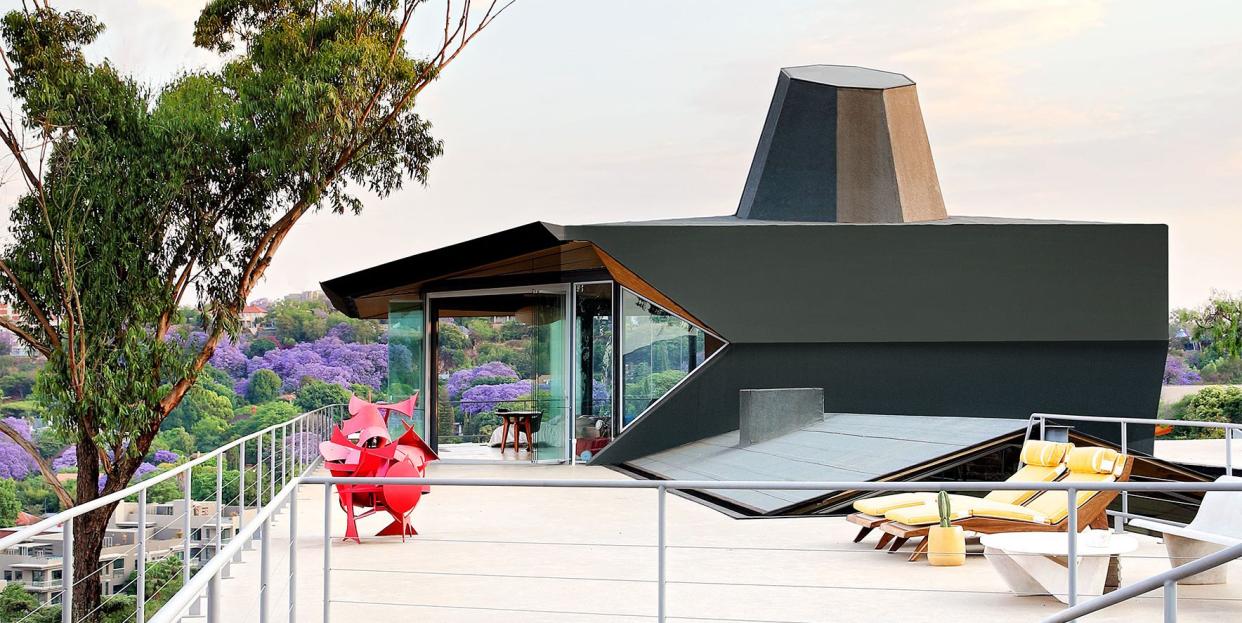
Expansive vistas aren’t easy to come by in Johannesburg, where houses are often tucked behind massive walls. So when Silvio Rech and Lesley Carstens visited a home for sale just two doors down from their own, they were surprised to discover a sweeping panorama overlooking the city below. Perched on a ridge, the property was densely overgrown with non-native wattles and eucalyptus trees—a clue as to why the house had sat on the market for two years after the death of its elderly owner.
Although they had outgrown their home, the couple, both architects, had planned to renovate and expand their former residence. But then they stumbled upon the neighboring house and that magnificent view. “It was the main drawcard,” Rech says.
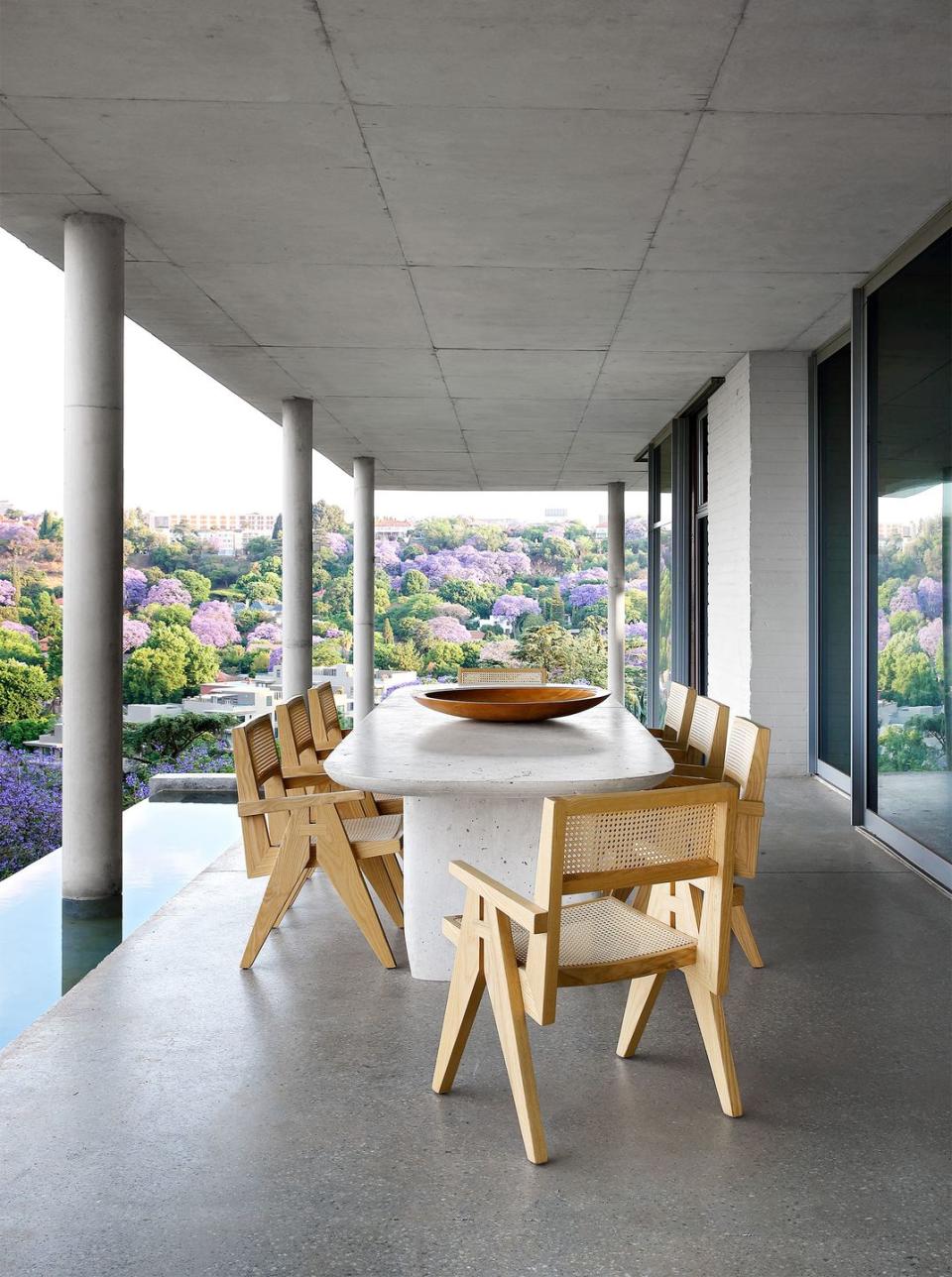
Their vision was to create a dwelling that would serve as an armchair for gazing out over the city, where jacarandas turn deep indigo in the spring and electric thunderstorms roll across the skyline in summer.
The innovative home on the property was also a surprise. Built in the 1950s, it was designed by Eyvind Finsen, a South African architect who had taught Rech when he was studying architecture at university. Open and airy, the bungalow’s design was an anomaly for the neighborhood, the affluent suburb of Westcliff, an enclave best known for its baronial mansions. By contrast, the Finsen house was clearly influenced by California modernists like Richard Neutra and wouldn’t have been out of place in the Hollywood Hills.
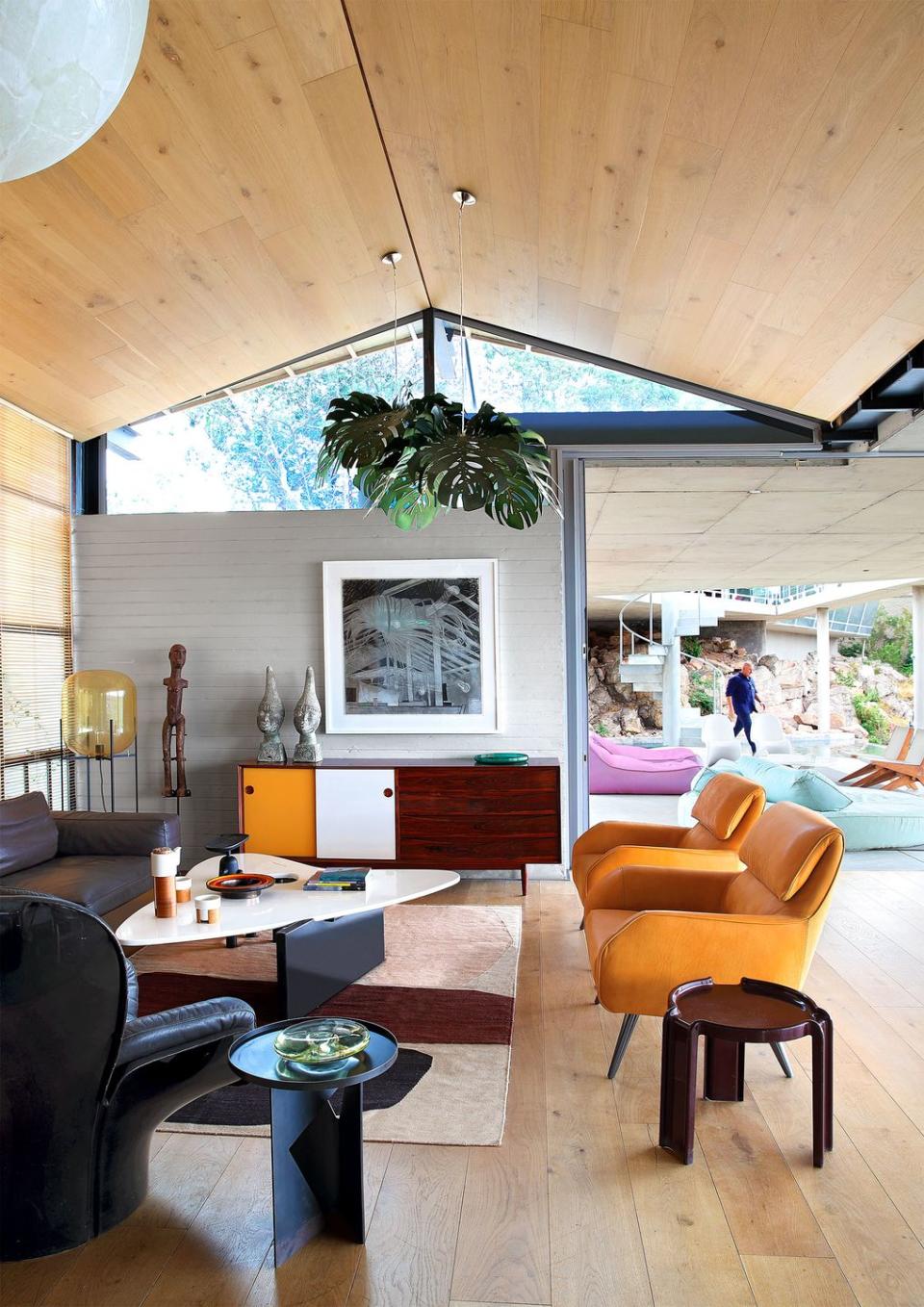
Rather than demolish the brick structure, Rech and Carstens chose instead to reimagine it. “We asked ourselves, What would the natural progression of a Palm Springs bungalow be today?” Rech says.
The couple, who met while working at an architecture firm in Johannesburg, have been pioneers on the South African design scene for more than 25 years. Their firm, Silvio Rech + Lesley Carstens Adventure Architecture, has designed such award-winning properties as Angama Mara in Kenya, Miavana in Madagascar, and Jao Camp in Botswana. They themselves fancy an adventure: While working on a resort in the Seychelles, they lived on a rubber boat with their two infant children (Gio is now 24, and Luna is 19). A favorite residential project—a futuristic glass-and-concrete home on a mountainside in Cape Town—has been dubbed the “Tony Stark House” for its resemblance to Iron Man’s mansion. “Innovative architecture,” Rech notes, “is what turns us on.”
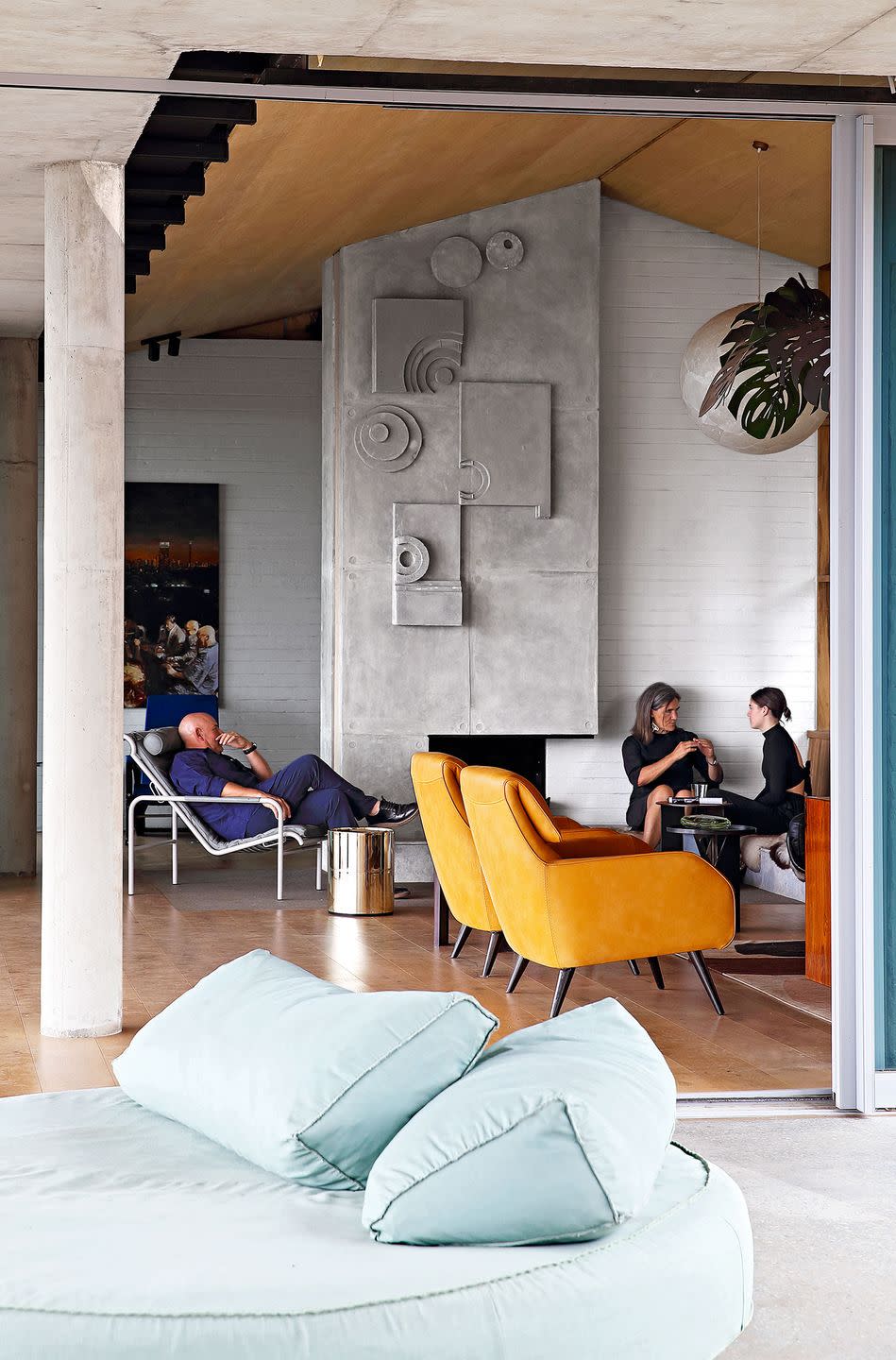
Honoring Finsen’s aesthetic, the pair maintained the house’s neat geometries, re-creating the original limewashed-plaster effect on the brickwork. They also preserved original elements like the fireplace, the kitchen’s stone and terrazzo tiles, and the Aga stove. But from there, they allowed themselves freedom to experiment. “With a client, you have to sell it,” Rech says. “Here we could say, ‘Let’s just do it.’ ”
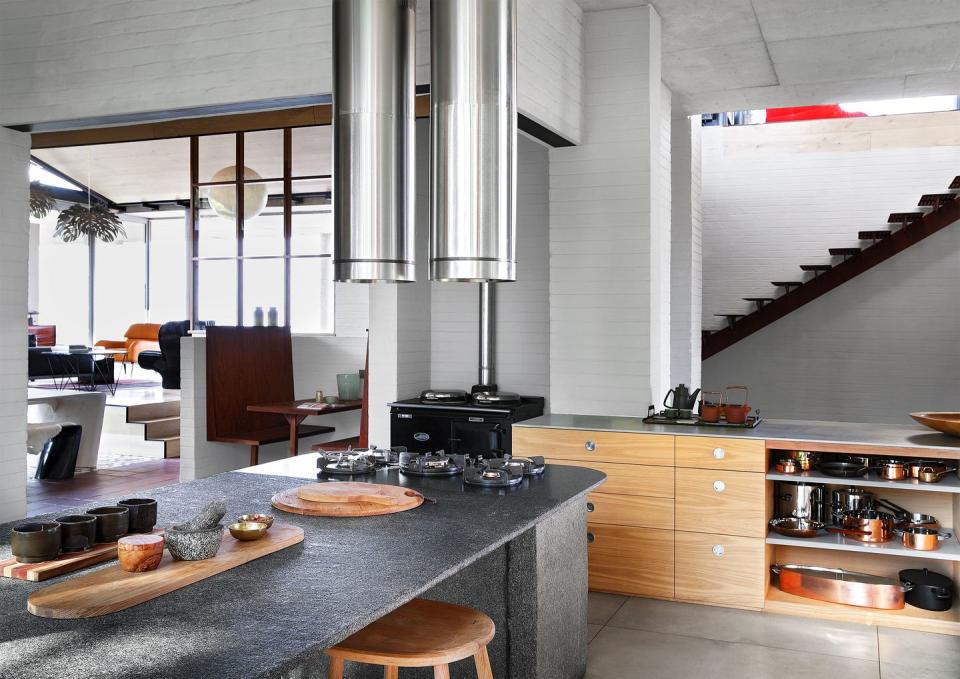
A trip to Japan had sparked an interest in that country’s architectural use of concrete. Here, they chose to deploy the muscular material in abundance. The decks, made from thick slabs of cement, give the house a sharp Brutalist look. “The house is quite simple but it has some interesting lines—it has a sculptural feel,” says Rech, noting that they also looked to John Lautner and the futurist Googie style for inspiration.
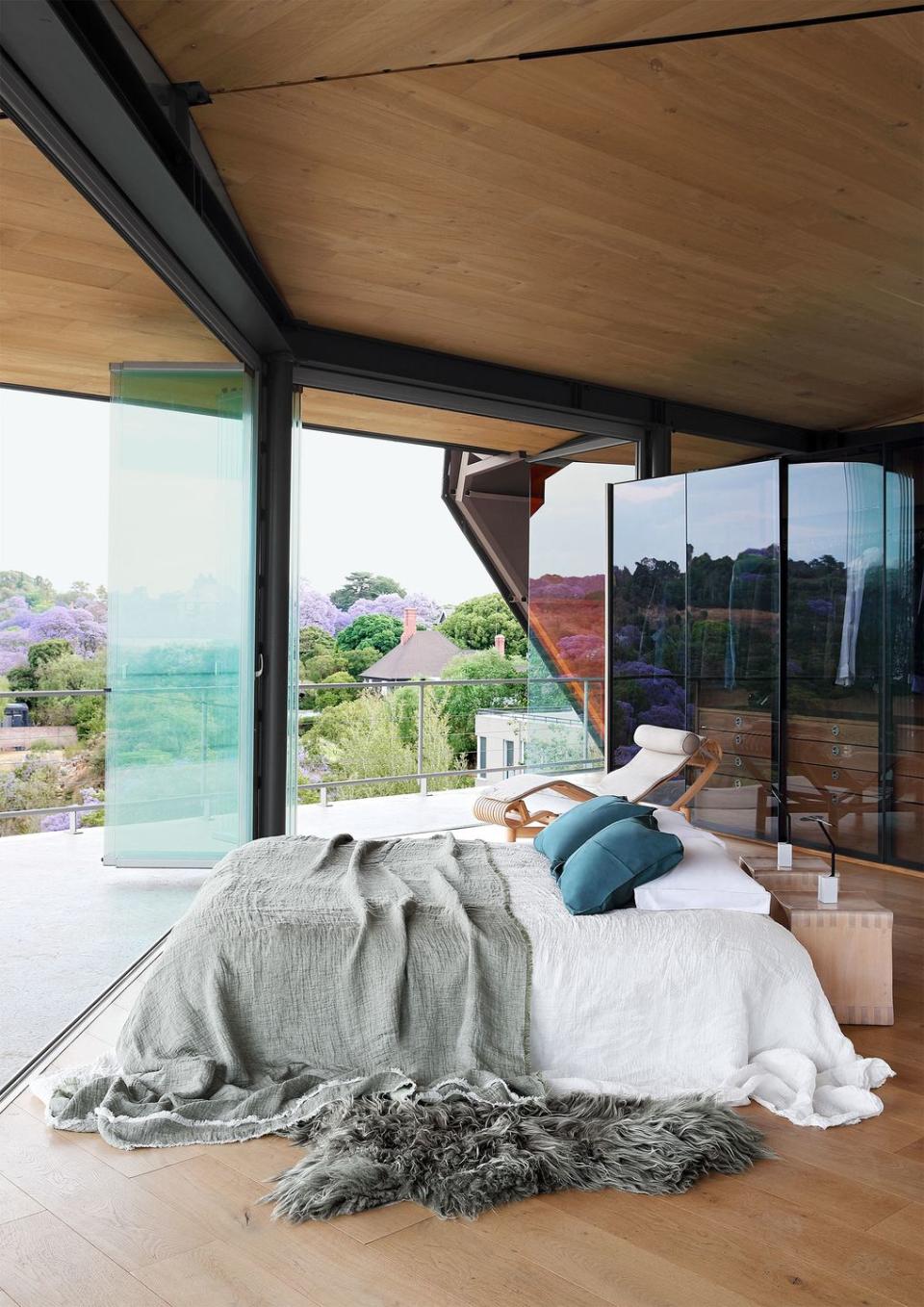
To furnish the interiors, they drew upon their collection of vintage pieces, incorporating a rosewood sideboard by Arne Vodder, an original Isamu Noguchi paper pendant light, and a steel sculpture by Eduardo Villa. But most of the decor was designed by Rech and Carstens and custom-made for the project, from the flamed Namibian granite kitchen island to the living room’s oak bookshelves and the pale blue daybed by the pool.
While the interior and exterior have a distinctly midcentury-modern feel, the garden reflects its environment. Working with local landscape architect Dawid Klopper, the couple removed most of the non-native foliage and replaced it with indigenous plants more typical of South Africa’s veld, or grassland, like aloes and red grass. They even steam-cleaned the blackened rocks to reveal their natural orange color. “We wanted to bring back the birds,” Rech says.
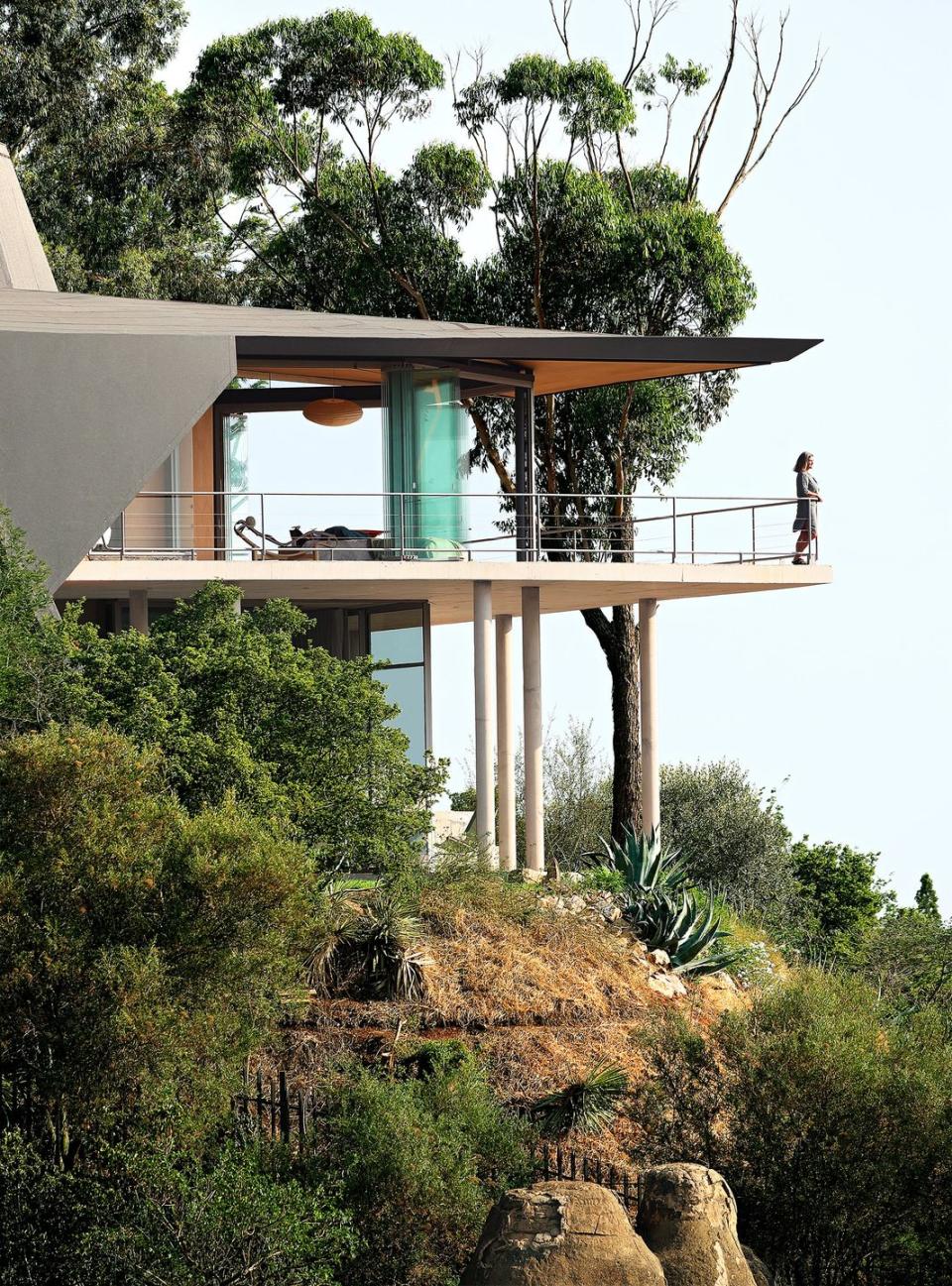
It’s no wonder that, pre-COVID, the couple was constantly being approached to lend their home as a setting for parties. They often did—and hope to again. “It’s fantastic!” Rech says. “It’s a party house, and it influences the way you feel about life.”
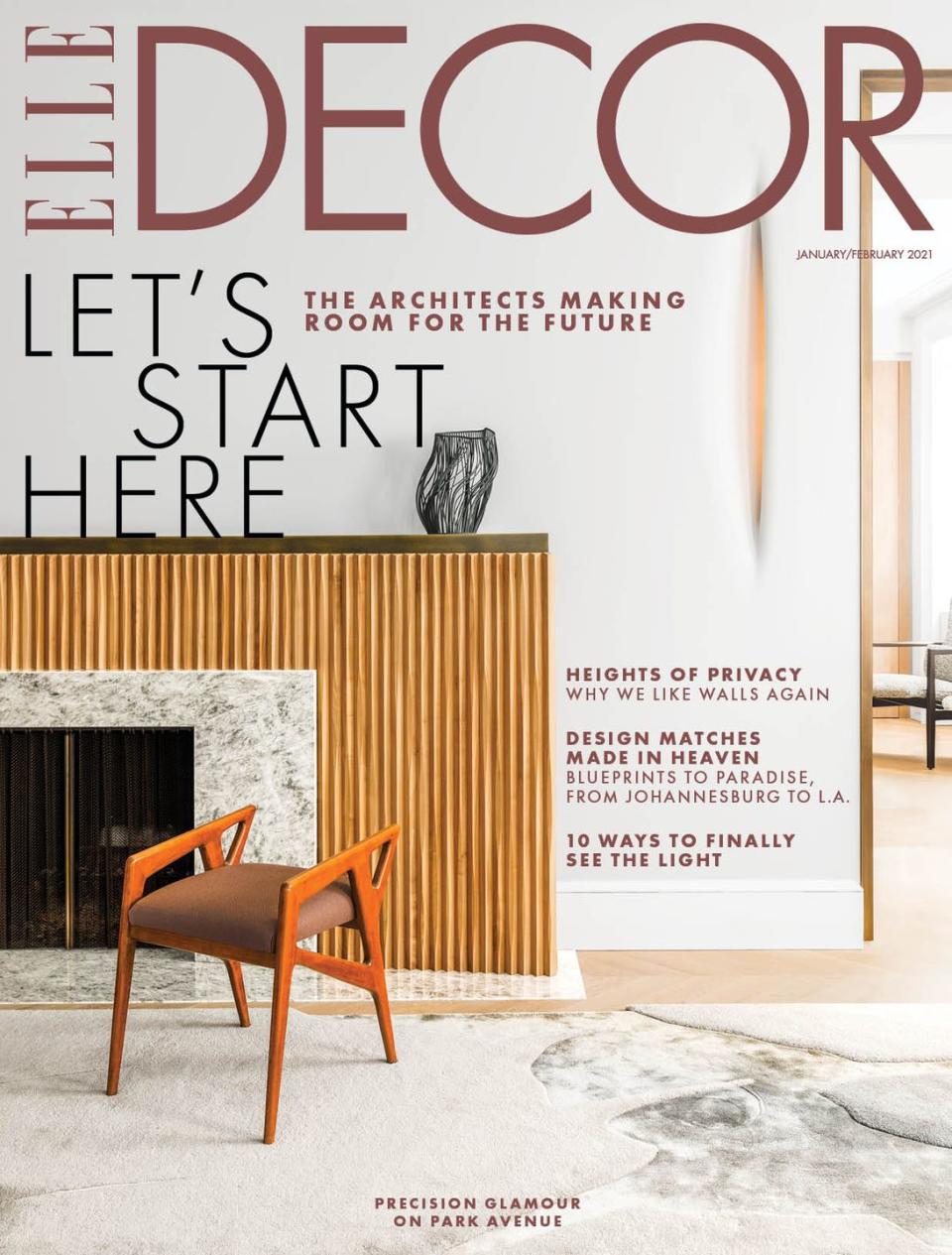
This story originally appeared in the January/February 2021 issue of ELLE Decor. SUBSCRIBE
You Might Also Like

